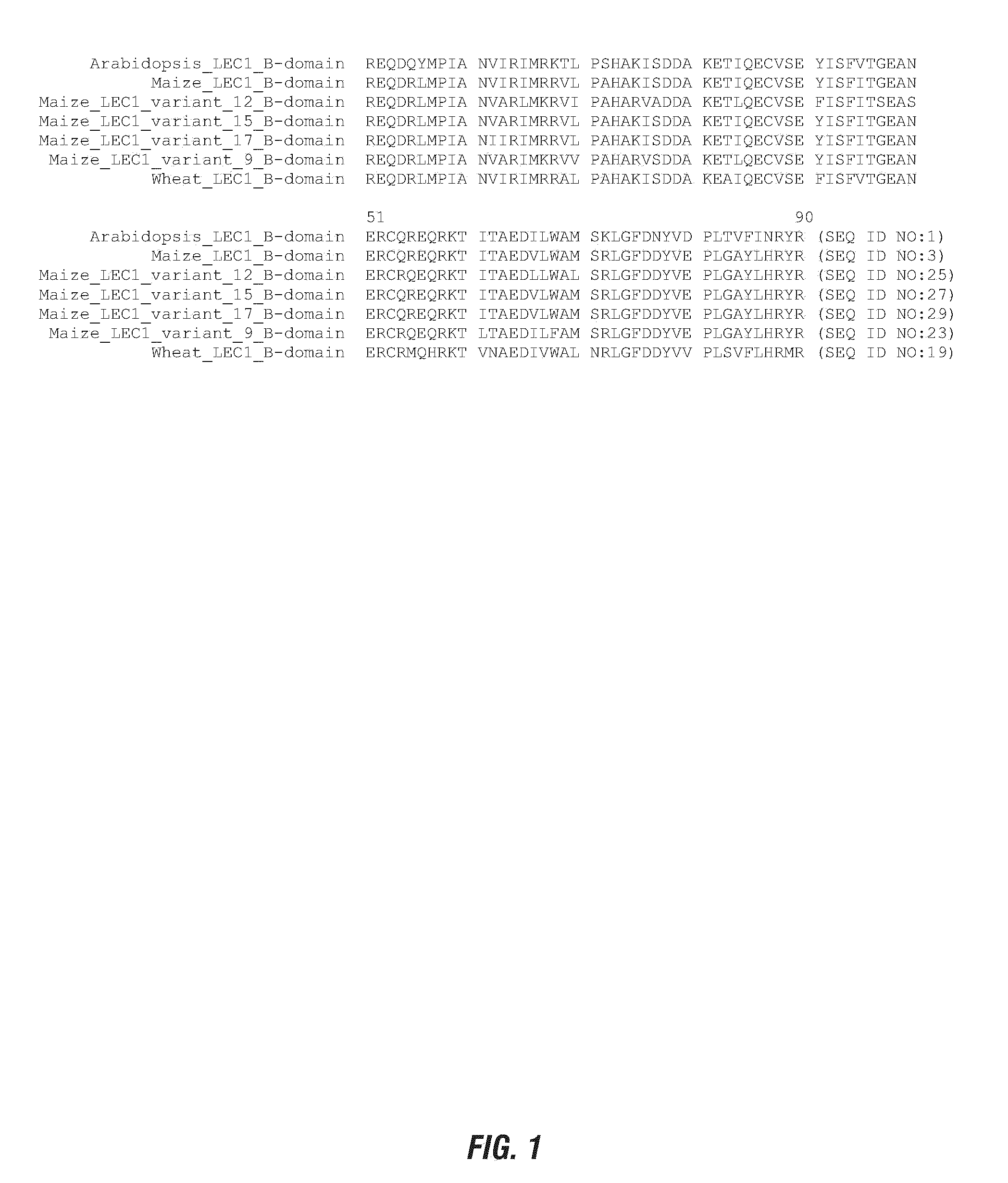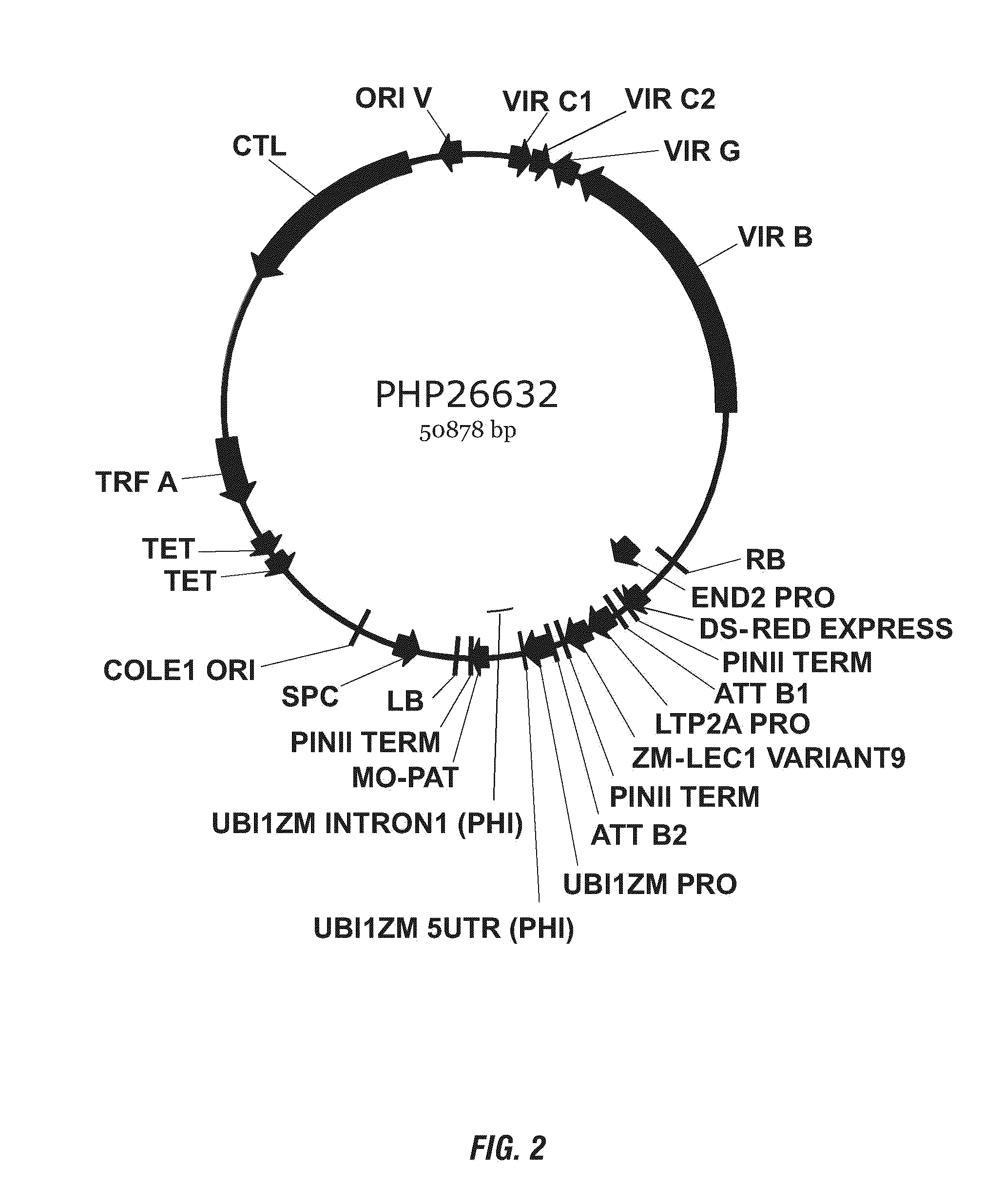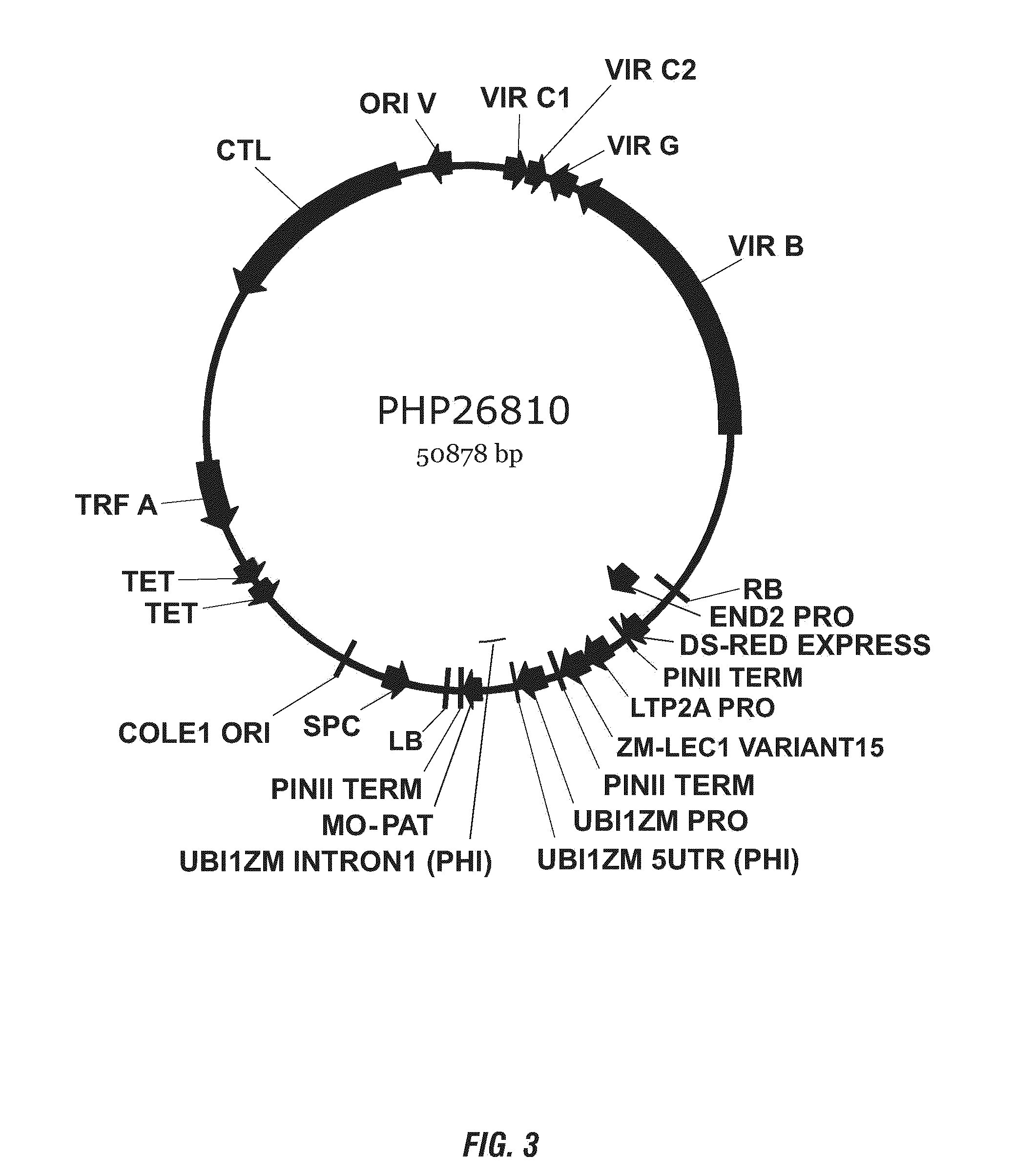Leafy cotyledon 1 transcriptional activator (LEC1) variant polynucleotides and polypeptides compositions and methods of increasing transformation efficiency
a transcriptional activator and variant polynucleotide technology, applied in the field of leafy cotyledon 1 transcriptional activator (lec1) variant polynucleotides and polypeptides compositions and methods of increasing transformation efficiency, can solve the problems of difficult and time-consuming transformation of agronomically important maize inbred lines, hybrids failing to produce favorable culture responses, and serious genotype limitations still exist, so as to increase transformation efficiency and increase transformation efficiency
- Summary
- Abstract
- Description
- Claims
- Application Information
AI Technical Summary
Benefits of technology
Problems solved by technology
Method used
Image
Examples
example 1
Vector Construction
[0207]Standard restriction fragment preparation and ligation techniques were used to position each LEC1 gene between the LTP2 promoter (U.S. Pat. No. 5,525,716) and a potato PIN II terminator. Each completed gene cassette was flanked by Gateway™ (Invitrogen) homologous recombination sites ATT L1 and ATT L2. These were used to mobilize the LEC1 gene expression cassettes into Gateway™-modified pSB11-derived T-DNA vectors (Japan Tobacco). These T-DNA vectors contained a selectable marker (a Ubi::moPAT::PinII expression cassette consisting of the maize ubiquitin-1 promoter including the 5′-untranslated region and first intron, a maize-optimized PAT gene, U.S. Pat. No. 6,096,947 and potato PINII terminator). In some vectors, a screenable marker, the DS-RED2 gene (Clontech), under the control of the aleurone-specific END2 promoter and potato PINII terminator, was also added. Each confirmed T-DNA vector was transformed via electroporation into Agrobacterium tumefaciens L...
example 2
Expression of Maize LEC1 Variants
[0208]Maize LEC1 variant 9 (SEQ ID NO:4) was expressed under the LTP2 promoter and pinII terminator (FIG. 2) and introduced into maize via Agrobacterium-mediated transformation. A total of 12 transgenic events were generated and produced T1 seeds. For each event, transgenic kernel was separated from null kernel by red fluorescence marker, 10 transgenic kernels were compared to 10 null kernels from the same ear.
[0209]Similarly, maize LEC1 variant 15 (SEQ ID NO:8) was moved into an expression cassette containing a Ltp2 promoter and a PinII terminator. This cassette was linked to another cassette containing a red fluorescence protein expressed under an aleurone layer specific END2 promoter with a Pin II terminator. The red fluorescence protein was used as a visual marker to track transgenic LEC1 variant gene. The two expression cassettes were then subcloned adjacent to a Ubiquitin promoter:Mo-PAT expression cassette. The resulting expression cassettes f...
example 3
Expression of Maize-Wheat Chimeric LEC1
[0210]Wheat LEC1 was moved into an expression cassette containing a Ltp2 promoter and a PinII terminator. This cassette was then subcloned adjacent to a Ubiquitin promoter:Mo-PAT expression cassette. The resulting expression cassettes flanked by T-DNA border sequences were then introduced into the Agrobacterium “super-binary” vector using electroporation, resulting in construct PHP25031 (FIG. 4). Corn plant was transformed with super-binary vector containing two expression cassettes via Agrobacterium-mediated transformation. A total of 10 transgenic events were generated and produced T1 seeds. For each event, embryo was dissected from 10 kernels. Genotype of each kernel was determined by PCR using primers specific to Mo-PAT gene.
PUM
| Property | Measurement | Unit |
|---|---|---|
| Temperature | aaaaa | aaaaa |
| Temperature | aaaaa | aaaaa |
| Fraction | aaaaa | aaaaa |
Abstract
Description
Claims
Application Information
 Login to View More
Login to View More - R&D
- Intellectual Property
- Life Sciences
- Materials
- Tech Scout
- Unparalleled Data Quality
- Higher Quality Content
- 60% Fewer Hallucinations
Browse by: Latest US Patents, China's latest patents, Technical Efficacy Thesaurus, Application Domain, Technology Topic, Popular Technical Reports.
© 2025 PatSnap. All rights reserved.Legal|Privacy policy|Modern Slavery Act Transparency Statement|Sitemap|About US| Contact US: help@patsnap.com



